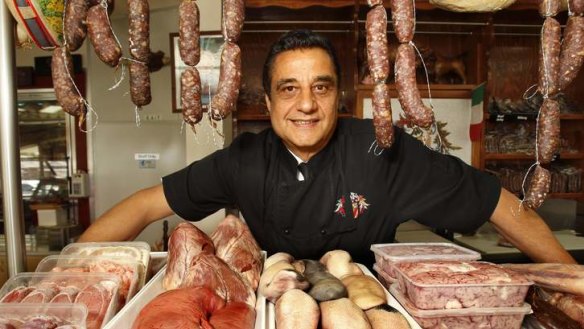The offal truth: 'MasterChef effect' no cure for squeamishness

The media hoopla surrounding nose to tail eating has done nothing to reverse falling sales of offal, say Sydney butchers, at a time when offal exports have hit a record high.
Pino Foresti, owner of Dolce Vita in Kogarah, said sales of livers, hearts, brains and sweetbreads continued their downward trend, showing Australians remain squeamish about offal.
''Especially younger people. They say 'brains, oh yuck, tongue, yuck, I can't eat that','' the seventh-generation Italian butcher said. ''They're not interested even with these supposed trends. I find we're losing them.''
The ''MasterChef effect'' of boosting sales of unusual ingredients did not apply to offal, he said.
Chefs such as Colin Fassnidge, of Four in Hand, known for dishing up whole suckling pigs, had failed to get people cooking offal at home.
''I hope there's a revival. I grew up cleaning guts and eating it, as many Asians and Europeans have for a long time,'' said Mr Foresti, who loves boiled steer's tongue with lemon juice, parsley, garlic and olive oil.
Peter Andrews, of meat supplier Haverick Meats, said offal sales to restaurants decreased last winter, a season when more chefs dared put it on the menu.
On Saturdays, he sells wholesale meat to the public from a store in Banksmeadow, where master butchers are on hand to teach people how to properly cook offal.
''We are not seeing these traditional recipes being passed on to the younger generations,'' Mr Andrews said. ''Many of our local chefs have not been exposed to these dishes either.''
Mr Foresti held his first offal cooking masterclass with food consultant Tawnya Bahr two months ago, dislodging the upper and lower palate, the inside cheeks, tongue and brain from a steer's head.
''It's a very delicate thing to handle,'' he told chefs, while squeezing goo out of metres of intestine, careful not to burst the skin.
Darren Templeman, head chef at Restaurant Atelier in Glebe, has featured typical innards and extremities such as pig trotters and ears on his tasting menu.
''Now we tend to disguise it and use it as more of a garnish, or a textural thing,'' he said. ''But I would use it more if customers wanted it.''
Food media doyenne Lyndey Milan said eating offal was environmentally responsible. She said ''half a generation'' were not taught home cooking, which compounded the reluctance of younger cooks to embrace dishes with offal.
''I can remember my mother soaking kidneys in milk, peeling lamb fry,'' she said. ''If you're not brought up with it, you freak out.''
Offal export sales have reached a record high, with 5 per cent year-on-year growth to 170,000 tonnes in 2012-13, Meat and Livestock Australia says. The top destinations are Hong Kong, Japan and South Korea.
Restaurant reviews, news and the hottest openings served to your inbox.
Sign up- More:
- Restaurant news
